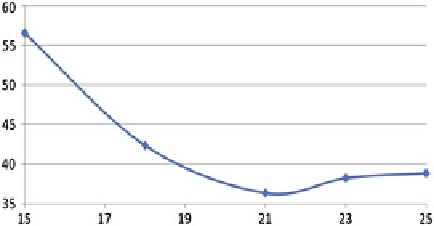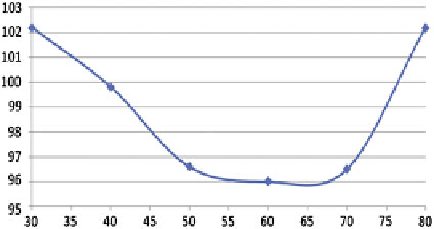Civil Engineering Reference
In-Depth Information
Fig. 6 Radon concentration
versus temperature (Akbari
et al.
2013
)
Fig. 7 Radon concentration
versus relative humidity
(Akbari et al.
2013
)
Relative humidity (%)
the water content is higher and the radon concentration decreases. However, for a
relative humidity above 65 %, this means that air density also increases, and radon
in the room cannot rise upward (Akbari et al.
2013
).
4 Cost-effectiveness Analysis
Coskeran et al. (
2002
) used the Garber-Phelps criterion to determine the per-
centage of householders that must remediate, in a particular area, in order for the
radon remediation program to be cost-effective. This criterion states that health
programs should be considered cost-effective, for policy purposes, if the cost per
life-year gained is less than the double of the average income (Garber and Phelps
1997
). These authors state that radon remediation programs will only produce
large health gains and be justified on cost grounds, if a higher percentage of
householders takes action. They also state that the percentage of properties above
the action level is a significant determinant of whether or not a program will
produce cost-effective health outcomes in an area. Other authors (Coskeran et al.
2006
) show that, for areas with a low percentage of homes with radon concen-
tration above the action level, the more cost-effective course of actions is as
follows:



